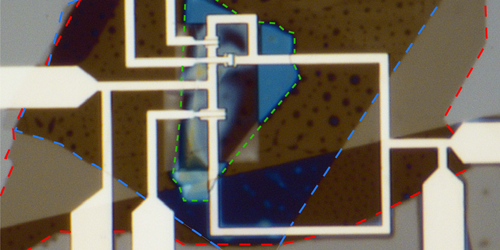A New Nonlinearity for Superconducting Circuits
Qubits based on superconducting circuits come in various forms, but one thing they have in common is their reliance on Josephson junctions, which give a circuit the nonlinearity necessary to generate qubit states. Simon Messelot from CNRS Grenoble, France, and his colleagues have now built a superconducting circuit whose nonlinear response differs from that of conventional Josephson-junction-based circuits [1]. The circuit design could lead to superconducting qubits with much longer coherence times.
A conventional Josephson junction is a short constriction or insulating section within a superconducting circuit. Current flows across the junction by quantum tunneling, and the magnitude of this current is related to the phase difference 𝜑 between the wave functions of the superconductor on either side of the junction. In traditional junctions, the current-phase relation (CPR) is nonlinear based on a sin( 𝜑) dependence. But in recent years, researchers have developed junctions based on semiconductors and two-dimensional materials whose CPR can include higher-order terms such as sin( 2𝜑). Nevertheless, the behavior is typically dominated by the lowest order sin( 𝜑) term.
Messelot and colleagues fabricated a superconducting circuit incorporating three graphene-based Josephson junctions. These junctions were arranged to form two superconducting quantum interference devices (SQUIDs), which are circuits in which the junctions’ 𝜑 values are sensitive to magnetic fields. By applying a magnetic field and controlling the voltage across every junction, the team suppressed the sin( 𝜑) term in one of the SQUIDs, causing its CPR to be dominated by sin( 2𝜑).
A superconducting circuit governed by sin( 2𝜑) has a more complex energy landscape, with two energy minima. A qubit whose states are defined by these minima would be longer lived and easier to manipulate than a conventional superconducting qubit.
–Marric Stephens
Marric Stephens is a Corresponding Editor for Physics Magazine based in Bristol, UK.
References
- S. Messelot et al., “Direct measurement of a sin(2𝜑) current phase relation in a graphene superconducting quantum interference device,” Phys. Rev. Lett. 133, 106001 (2024).




